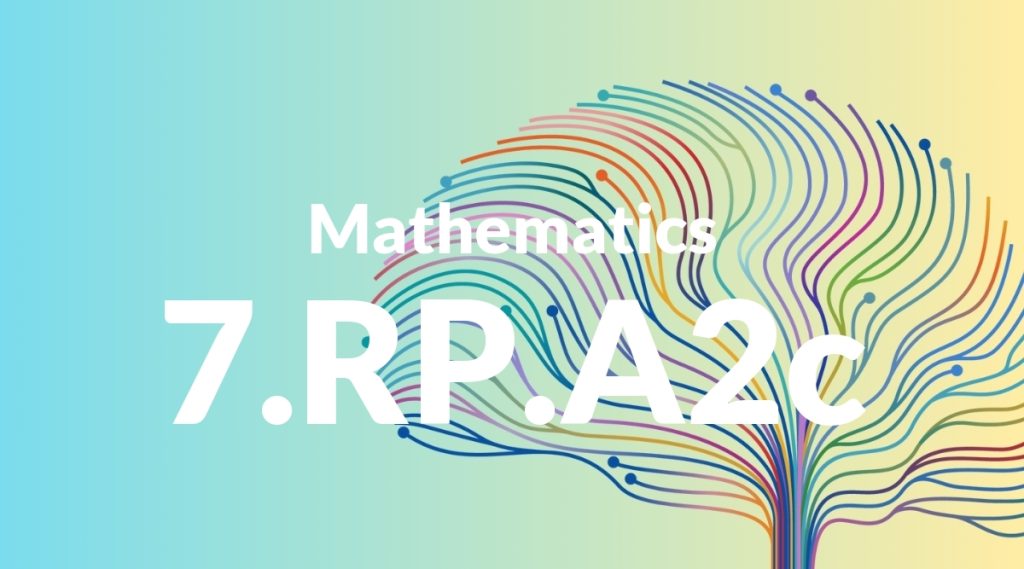Standard: 7.RP.A2c – Represent proportional relationships by equations. For example, if total cost t is proportional to the number n of items purchased at a constant price p, the relationship between the total cost and the number of items can be expressed as t = pn.
Grade level: Grade 7
Subject: Mathematics
Domain: Ratios & Proportional Relationships
Teacher Overview
This standard focuses on helping students represent proportional relationships using equations. Understanding this concept is crucial as it forms the foundation for more advanced algebraic concepts and real-world problem-solving. Students should be comfortable with basic arithmetic operations, understand the concept of a ratio, and be able to simplify ratios.
After mastering this standard, students will be able to solve multi-step ratio and proportion problems and apply proportional reasoning to complex real-world scenarios.
Common Misconception 1
Some students may incorrectly think that proportional relationships can be represented by addition rather than multiplication. This misconception arises because they might not fully grasp the concept of scaling by a constant factor.
Intervention 1
To address this misconception, use visual aids and concrete examples to demonstrate that proportional relationships involve multiplying by a constant factor, not adding a constant amount.
Common Misconception 2
Another common misconception is confusing proportional relationships with linear relationships that have a non-zero y-intercept. This occurs because both types of relationships can be represented graphically, but their equations are different.
Intervention 2
Provide clear examples and practice problems that differentiate between proportional relationships (t = pn) and linear relationships with a y-intercept (y = mx + b). Emphasize the absence of a y-intercept in proportional relationships.
Prerequisite Knowledge
Students should understand basic multiplication and division, the concept of a ratio, and how to simplify ratios.
Subsequent Knowledge
Students will develop skills in solving multi-step ratio and proportion problems, and they will be able to apply proportional reasoning to complex real-world scenarios.
Instructional Activities
- Create a table of values to represent proportional relationships.
- Use graphing to visualize proportional relationships.
- Solve word problems involving proportional relationships.
- Conduct experiments to collect data and represent it proportionally.
- Use technology to simulate proportional relationships.




